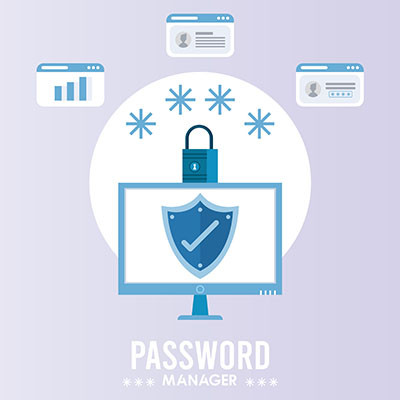These days, data privacy is absolutely critical in both a business and individual context. In some locations, governments have introduced legislation to protect consumers, and in others, there is significant pushback in favor of fewer regulations on business. How does data privacy factor into your business’ operations?
FRS Pros Blog
There are a lot of threats to businesses nowadays, but ransomware seems to be the worst… or at least, the most feared. It seems as though we can’t mention cyberthreats anymore without mentioning ransomware. Unfortunately, we’re right to do so, and the reason for this is a simple one.
You might see encryption as a major benefit to your cybersecurity strategy, but it’s often used in a way that might have you guessing whether you really understand it. Let’s take a closer look into what encryption does to your data, as well as why it is essential for any business to ensure maximum privacy and security.
How often does your company take it upon itself to ensure that those working for its success—your employees—are kept up to speed on cybersecurity? If your approach is to have your team sit in a room and watch a presentation once a year, it’s time to reconsider your training strategy. Let’s talk about the impact that proper cybersecurity training can have, and who tends to have access to it.
We discuss phishing often on this blog, and one method that often flies under the radar is smishing, or phishing that is conducted through SMS messages. Although email phishing is perhaps the most common method of conducting these scams, you should also be prepared to take on smishing, as it comes with its own share of unique challenges and dangers.
Scams are everywhere in our highly digitized world, which makes it especially important that everyone is prepared to deal with them—both personally and professionally. The publication Consumer Reports’ cover feature for its August 2023 edition is dedicated to exactly this goal: helping its readers avoid the various scams and threats out there. Let’s look at some of the advice shared in the article, and compare it to the best practices we recommend.
In 2004, a service called VirusTotal was launched and swiftly became a popular antivirus and malware scanner to help detect threats in various files and URLs. It became popular enough that it was officially acquired by Google in 2012 and ultimately assimilated into Chronicle, a cloud-based security operations suite for enterprise businesses. Despite this impressive pedigree, however, we find ourselves able to look to VirusTotal as a sobering reminder of how fickle cybersecurity can be, with the service being the source of some limited data exposure.
Amazon Prime subscribers recently received an email from the online marketplace, warning them of the prevalence of scams that took advantage of their offerings and brand recognition. Let’s go through the advice that this email shared, and compare it to the best practices we recommend for avoiding scams.
Nowadays, you can’t afford not to have some portion of your business’ budget set aside for cybersecurity. The question is, how much do you need, and what should you be spending it on first? Let’s take a few moments to dig a little deeper into this question and examine a few cybersecurity protections you should establish as your business’ baseline defenses.
We talk a lot about phishing. What it is, what it does, and perhaps most critically, what it looks like. However, have you ever expected a phishing email to look like… nothing? As in, a completely blank message?
If you answered, “no,” that’s exactly what today’s cybercriminals are counting on.
The IoT—the Internet of Things—is a fascinating technology, as it exemplifies just how much can be accomplished when Internet connectivity is used to augment the capabilities of otherwise “dumb” devices. Unfortunately, as fascinating as it is, the IoT is also infamous for its security issues…a reputation that attackers have been perpetuating as these devices grow more common.
Of all the cybersecurity threats out there for your business to contend with, there are going to be a few of them that are just more likely to impact you than others. That’s just a statistical reality. Fortunately, these threats can be addressed, so let’s discuss how you can do so.
While it is important that your business implement comprehensive network protections, there are plenty of simple ways that your business’ cybersecurity could potentially fail. This could easily cost you heavily in your available capital, financial and social alike.
AI—artificial intelligence—has been a hot topic as of late, with it seemingly being used for any purpose you can imagine nowadays. Unfortunately, this has also included cybercrime.
However, just as AI can be a weapon for cybercriminals to use, it can also be a shield to help protect your business from threats. For instance, in phishing prevention.
When it comes to security, one often overlooked tool is the virtual private network, or VPN. We recommend that all businesses use a VPN to keep remote and hybrid workers from inadvertently putting your business’ data at risk while out of the office. Let’s go over why a VPN is so effective, as well as what you should look for in a business-grade VPN tool.
Businesses cannot afford to grow complacent with their network security, as it could make a significant difference between falling prey to an attack and remaining secure. The process of securing a network must be looked at holistically, from top to bottom. This idea of enterprise security is not new, but even a small business needs to keep it in mind, and these solutions are more accessible than you might think.
One major aspect of your business’ security is how well your team is trained to preserve it. Let’s go over some of the aspects that you need to be sure you address as you educate your team.
One of the reasons that information technology keeps changing is for the sake of the user and their convenience using it. However, if this convenience comes at the sacrifice of your business’ cybersecurity, it just isn’t worth it. This is the crux of why we always recommend that any organization seeking to use password management should invest in a reputable password management software, rather than the built-in capabilities of modern browsers.
Cyberattacks are a serious problem that all businesses face in some form or another, but there are small, everyday tasks you can do to ensure that they impact your organization as minimally as possible. It takes intention and effort to protect your business and its infrastructure, but that doesn’t mean that it has to be hard. Here are three simple ways you can keep your infrastructure secure.
Did you know that World Backup Day is in just a few short weeks? While it is an important occasion for businesses to recognize, data backup should really be something you think about all the time. This is because your backup is an integral part of the backup and disaster recovery portion of your overall business continuity.






















